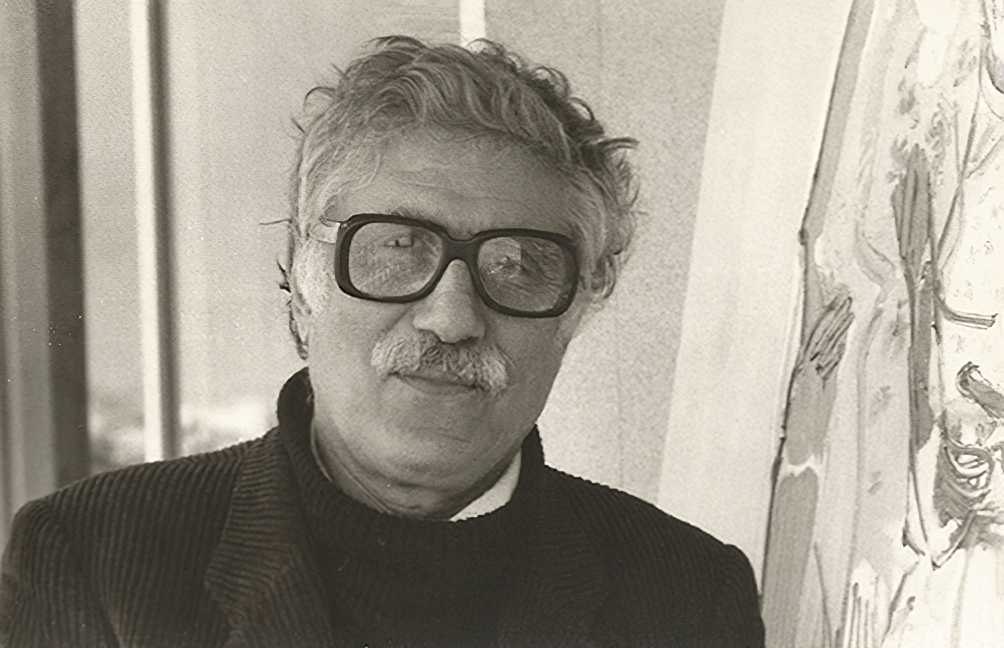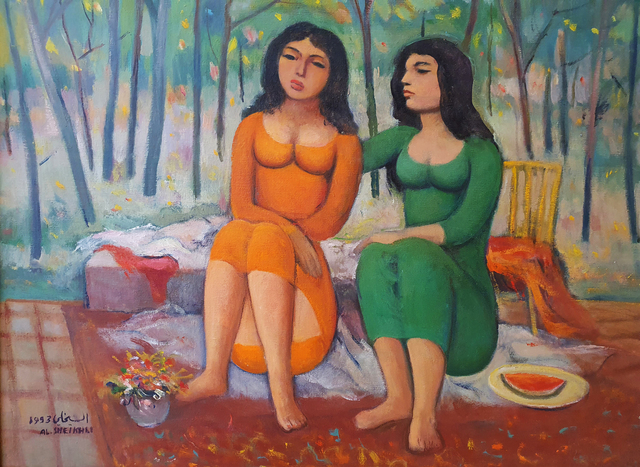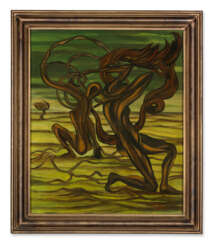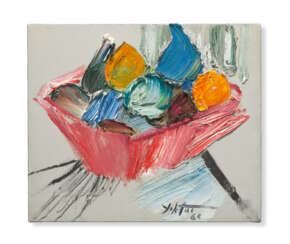
Paintings — Modern and Contemporary Middle Eastern Art

Nabil Nahas is a Lebanese artist and painter living in New York.
Nahas’ paintings have made use of geometric motifs and decorative patterns inspired Levantine art architecture. Nahas also employs traditional Western abstract painting, pointillistic and impressionistic techniques. Sometimes he combines these traditions in brightly colored paintings, suggestive of the richness of nature and of the imagination. One of Nahas’ motifs is starfish, sometimes cast in acrylic paint, on top of which he layered high-chroma acrylic paint.

Helen Khal was an American artist and critic of Lebanese descent. She started her painting career at the age of 21. She held her first individual exhibition in 1960 in Galerie Alecco Saab in Beirut. Her other one-woman shows took place at Galerie Trois Feuilles d'Or, Beirut (1965); Galerie Manoug, Beirut (1968); at the First National Bank, Allentown, Pennsylvania (1969); in Kaslik, Lebanon (1970); at the Contact Art Gallery, Beirut (1972, 1974 and 1975) and at the Bolivar Gallery in Kingston, Jamaica in 1975. Her work also appeared in the Biennales of Alexandria and São Paulo. She also taught art at the American University of Beirut from 1967 to 1976 and at the Lebanese American University from 1997 to 1980. She inspired many other artists. Helen Khal was also recognized as an author and critic. "From 1966 to 1974, Helen Khal was Art Critic to two Lebanese periodicals, The Daily Star and Monday Morning.

Paul Guiragossian (Armenian Պոլ Կիրակոսյան) was a Lebanese artist of Armenian origin.
Paul Guiragossian is known as the author of many portraits and landscapes. He is also known for his paintings about the life and life of Armenians in migration.

Helen Khal was an American artist and critic of Lebanese descent. She started her painting career at the age of 21. She held her first individual exhibition in 1960 in Galerie Alecco Saab in Beirut. Her other one-woman shows took place at Galerie Trois Feuilles d'Or, Beirut (1965); Galerie Manoug, Beirut (1968); at the First National Bank, Allentown, Pennsylvania (1969); in Kaslik, Lebanon (1970); at the Contact Art Gallery, Beirut (1972, 1974 and 1975) and at the Bolivar Gallery in Kingston, Jamaica in 1975. Her work also appeared in the Biennales of Alexandria and São Paulo. She also taught art at the American University of Beirut from 1967 to 1976 and at the Lebanese American University from 1997 to 1980. She inspired many other artists. Helen Khal was also recognized as an author and critic. "From 1966 to 1974, Helen Khal was Art Critic to two Lebanese periodicals, The Daily Star and Monday Morning.

Helen Khal was an American artist and critic of Lebanese descent. She started her painting career at the age of 21. She held her first individual exhibition in 1960 in Galerie Alecco Saab in Beirut. Her other one-woman shows took place at Galerie Trois Feuilles d'Or, Beirut (1965); Galerie Manoug, Beirut (1968); at the First National Bank, Allentown, Pennsylvania (1969); in Kaslik, Lebanon (1970); at the Contact Art Gallery, Beirut (1972, 1974 and 1975) and at the Bolivar Gallery in Kingston, Jamaica in 1975. Her work also appeared in the Biennales of Alexandria and São Paulo. She also taught art at the American University of Beirut from 1967 to 1976 and at the Lebanese American University from 1997 to 1980. She inspired many other artists. Helen Khal was also recognized as an author and critic. "From 1966 to 1974, Helen Khal was Art Critic to two Lebanese periodicals, The Daily Star and Monday Morning.




Ismail Al-Sheikhly is a contemporary Iraqui artist. He belonged to one of the first art groups to appear in Iraq, 'La Societe Primitive', founded in 1950. The group later changed its name to 'The Pioneers' and kept it into the 1970s. Some of his works are influenced by Cubism, a movement which grew in popularity throughout the 1950s, and was the preferred artistic style of one of Al-Sheikhly's important contemporaries, Hafiz Drubi. Al Sheikhly’s early works are inspired by the Iraqi village life, though his later works are more focused on abstracted colour combinations and obscured backgrounds. Women feature highly as a central theme in his work. Painted in groups quite often, Al Sheikhly’s women are streamlined with oval faces and generic bodies and seem to always be in states of coming and going, whether that be to the mosque, to the souks, or to do some domestic task.
























































.jpg)





